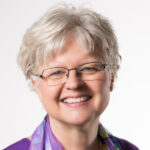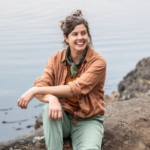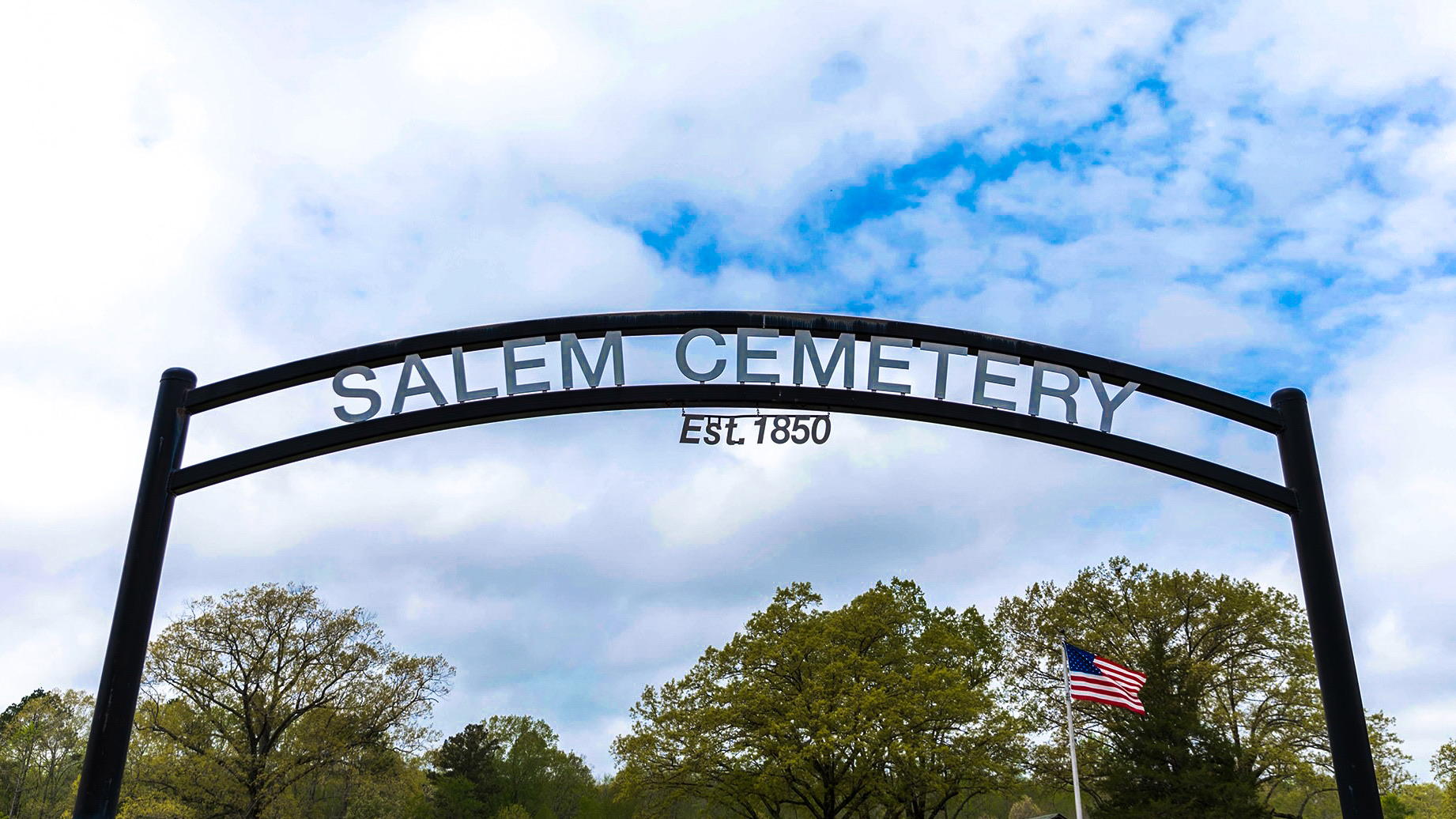
Where No One is a Stranger
In Arkansas’ Salem Cemetery, everyone you meet is a friend, a neighbor, or maybe even one of your people.
In a time where many people do not know their next-door neighbors’ names, the unincorporated community of East End in central Arkansas stands as a reminder of how a society can and should be. Arkansas, like other rural states, has many places we simply call communities. Unlike a town or a city, our communities do not have their own mayor or a post office. The county sheriff patrols the area; mail comes from the closest incorporated town.
Our communities do, however, have schools and diners and convenience stores. They have lots of churches — around here, mostly Baptist of various ilk like Southern or Missionary or the Freewill foot-washers, a few Methodists, a scattering of Pentecostals and Nazarene. A rare picturesque Catholic church graces our shady country roads, lending an air of historical gentility to our otherwise rustic landscapes. The Carmelite Monastery at Marylake is just down the road from East End. Some of our communities have a gas station. Some have a tractor repair shop or five. East End has a grocery store and a Pizza Hut. A beauty shop. A hardware store.
But one important thing nearly all of our communities have is a cemetery.
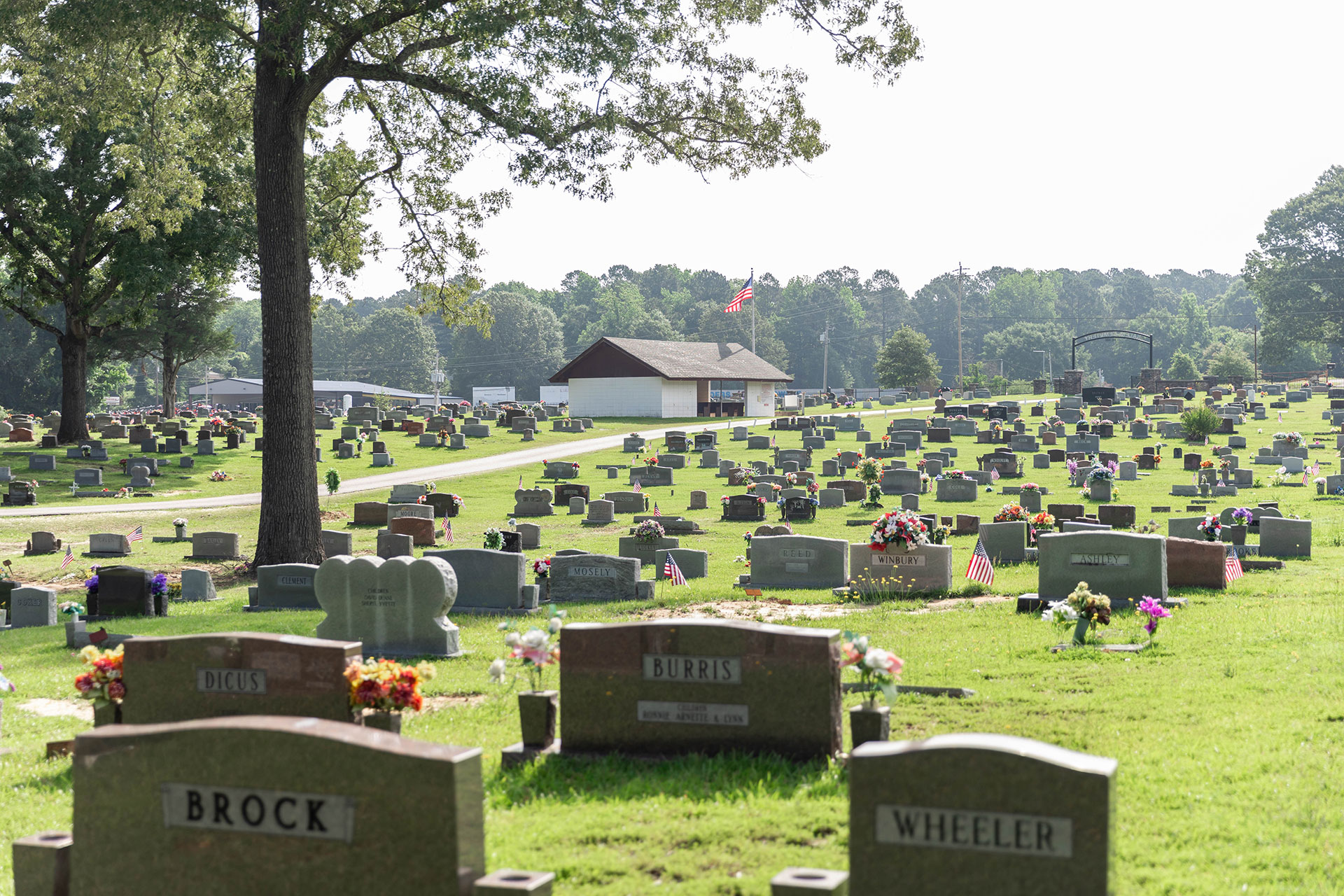
Salem Cemetery, like most others across the south, binds her community together and defines its culture and its ethos.
Adorning the west side of a winding two-lane blacktop in the East End community just south of Little Rock lies Salem Cemetery. The beauty and grace of her rolling hills and stately oaks and cedar trees evoke not only East End’s gracious and pastoral past — where neighbor took care of neighbor, where families worked and worshipped together — but also its welcoming and compassionate present — where good fortunes are shared and, in the sharing, the joy is multiplied among many; where tragedies are shared and, in the sharing, the burden is divided among many.
Welcoming Arms
Covering around eight acres, Salem’s two entrances off of Arch Street Pike connect a paved, circular driveway, where trucks and cars can be seen at any time, on any day. An open pavilion made of white concrete blocks shelters two pulpits and several rows of wooden pews painted a rusty red. The pavilion provides a place for graveside services when weather interferes with outdoor ceremonies, a place to get out of the blistering sun, a place to sit quietly with grieving kinfolk and friends, a place to remember the dead. Even on this unusually warm May morning, a cool breeze wafts through the pavilion.
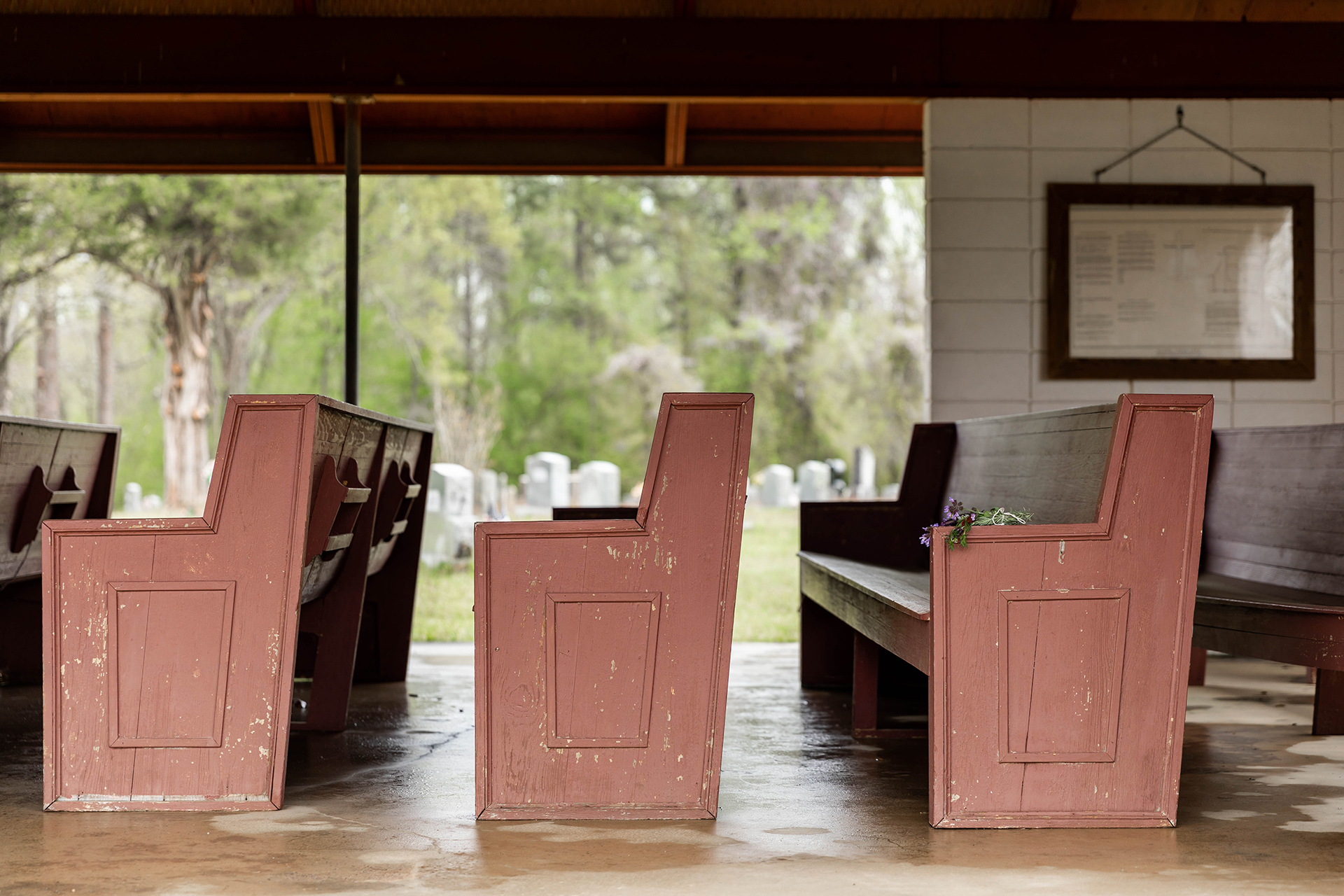
Salem Cemetery is where my parents are buried. My grandparents. Many friends, aunts, uncles, cousins — once, twice, three times removed — now call Salem their forever home. This is where the community founders — the Coles, the Youngs, the Hicks, and the Haynes — lie beneath the well-tended sod. I’m a proud member of the Haynes and Wright clans with a sprinkling of Youngs (I think by marriage) just to spice things up.
I learned some interesting things about my parents just after they died: My mother could yodel (now that made me laugh); my father struck out Jackie Robinson — not once, but twice — during his days as a pitcher for the Marine Corps team at Camp Pendleton when Robinson was at UCLA (now that made me proud). Funny how much you learn about the people you love the most only after they are gone.
Walking up and down Salem’s 40-plus rows on this sunny Friday before Memorial Day in 2022, I’m reminded that one day in the not-so-distant future, I will follow my parents into whatever comes next. I face my own mortality. But in Salem’s peaceful hills and enormous ancient shade trees, I almost look forward to her welcoming arms.
Almost.
Salem welcomes her visitors. I imagine her saying, in a sweet and lazy Arkansas drawl, “So glad y’all could drop by. It’s nice to get in a visit or two before you settle in for good.”
Salem welcomes her visitors. I imagine her saying, in a sweet and lazy Arkansas drawl, “So glad y’all could drop by. It’s nice to get in a visit or two before you settle in for good.”
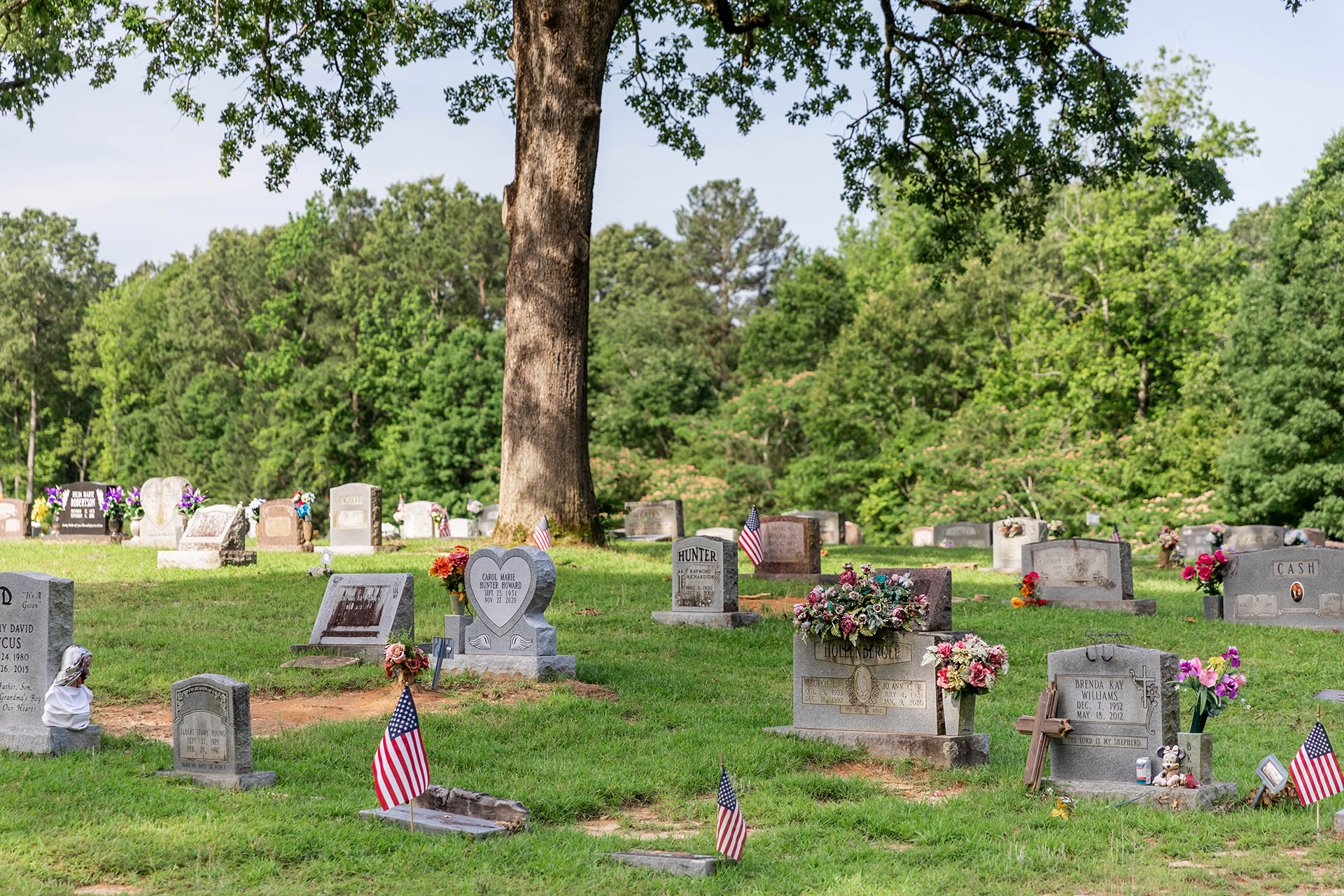
But that might have been the wind winding through the thick woods along the property line, whispering as it, like me, meanders through the headstones.
“Take your time. Sit a spell in my pavilion. There’s usually a nice breeze in there. Just make yourself at home, hon. Would you care for an icy glass of sweet tea?”
“Hi there!”
A woman carrying an armful of silk flowers interrupts my reverie. She cuts over a row to speak to me. “I’m here visiting my great-grandma’s grave. Brought new flowers for her headstone. She’s right over there.” The woman points to the center of the cemetery. “Beside that cedar tree. Who are your people?”
In Arkansas, your kinfolks are referred to as your people.
"I’m a Haynes. My mother was Erma True. She and Daddy are a few rows up. By the oak tree."
“I’m a Haynes. My mother was Erma True. She and Daddy are a few rows up. By the oak tree.” We chat a while, admiring the flowers on my Mammaw’s headstone. We use hushed tones. We show respect for the dead, for the hallowed ground on which we stand.
Besides attending the graveside services of relatives, I’ve never been much for visiting Salem. But during the time of research for this essay, I found myself anticipating the required trips. Much of my anticipation was because I had begun to look forward to these random encounters with strangers.
Strangers is not the right word. No one visiting Salem Cemetery is a stranger. By virtue of stepping onto her grounds, every person is a friend, a neighbor, and somewhere in the distant past, probably kinfolk. My people.
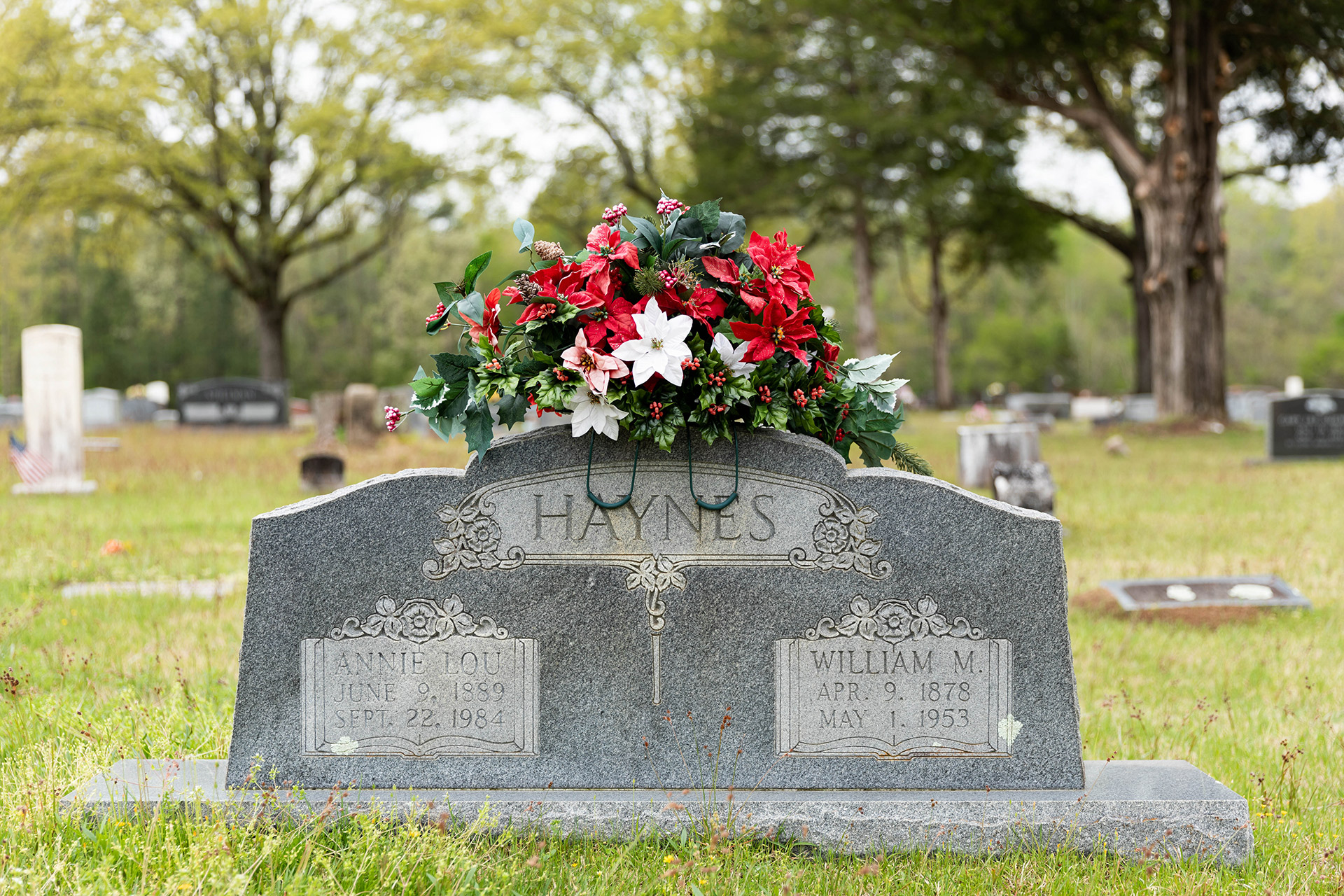
A Little Bit of History
Cemeteries were not always serene havens like Salem. According to Keith Eggener in his book “Cemeteries,” burial grounds in urban areas of the early 1800s were hotbeds of contagious diseases like cholera and yellow fever. Cemeteries contaminated public water supplies and caused noxious fumes to permeate neighborhoods and town squares.
To solve the problem, cities passed ordinances prohibiting or restricting burials within city limits. And so began what is known as the rural cemetery movement. Well-known cemeteries, such as Mount Auburn in Boston and Mount Holly in Little Rock, sprang up as safe places to picnic or stroll — a sort of combination burial ground and urban park outside the city proper. Places to see and be seen. Places of cobblestoned pathways and monuments to city leaders and the rich and famous.
The word cemetery is derived from the Greek for “sleeping chamber” and refers to a scenic, non-denominational burial place located outside an urban area, according to Eggener. Although there is some disagreement among historians as to the linguistic difference in the terms graveyard and cemetery, I choose to use the definitions I heard one sultry August evening from a ghost-tour guide in Charleston, South Carolina.
She told our group — mostly sober conventioneers fresh off a day of committee meetings and brutal PowerPoint presentations — that a graveyard is attached to a church, while a cemetery is a stand-alone burial ground unaffiliated with a particular religion. On this point, she was in total agreement with Mr. Eggener.
A graveyard is attached to a church, while a cemetery is a stand-alone burial ground unaffiliated with a particular religion.
Church deacons and ladies’ auxiliaries tend the graveyards, which are usually reserved for burying the members of the congregation and their kin. Cemeteries like Salem, on the other hand, are more accessible, with admittance typically determined by a nonprofit charter or published bylaws.
Historian and longtime East Ender Charlotte Curlee Ramsey researched the origins of the Salem Cemetery and published its history in 2001. She notes that in 1840 — at the height of the rural cemetery movement — the Cole family of East End lost two sons and buried them in the middle of what would later become Salem Cemetery. The family planted a cedar tree between the boys’ primitive stone markers. Those are now barely visible at the base of the tree. The Coles later donated the land to the community, and today it operates as a nonprofit governed by a committee of local residents.
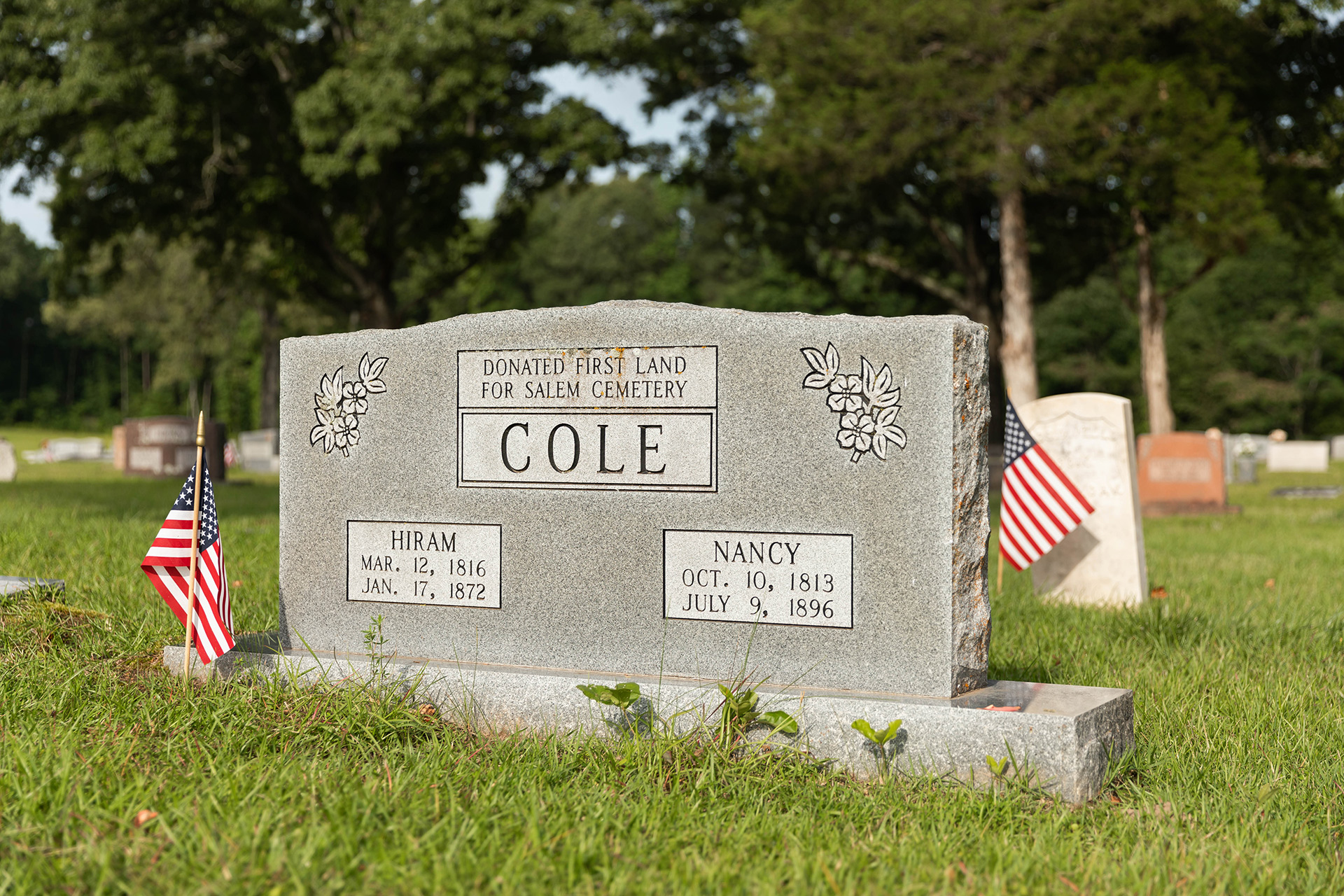
Preparing for Memorial Day
On this warm and humid May morning, I’ve just finished talking with Robbie Haynes, the current caretaker of Salem. And yes, Robbie is also my first cousin.
Since early morning, volunteers have filled the cemetery to place flags beside the graves of all the veterans buried there. The morning is winding down, everyone going their separate ways. The flags wave proudly across the rows. Over 250 veterans of eight wars lie in the Salem Cemetery. The community is proud of its veterans. Sunday services the day before Memorial Day will honor those both living and dead. The Pledge of Allegiance will be recited. “The Star-Spangled Banner” will be sung. No one will even think about taking a knee. A bugler will play “Taps.”
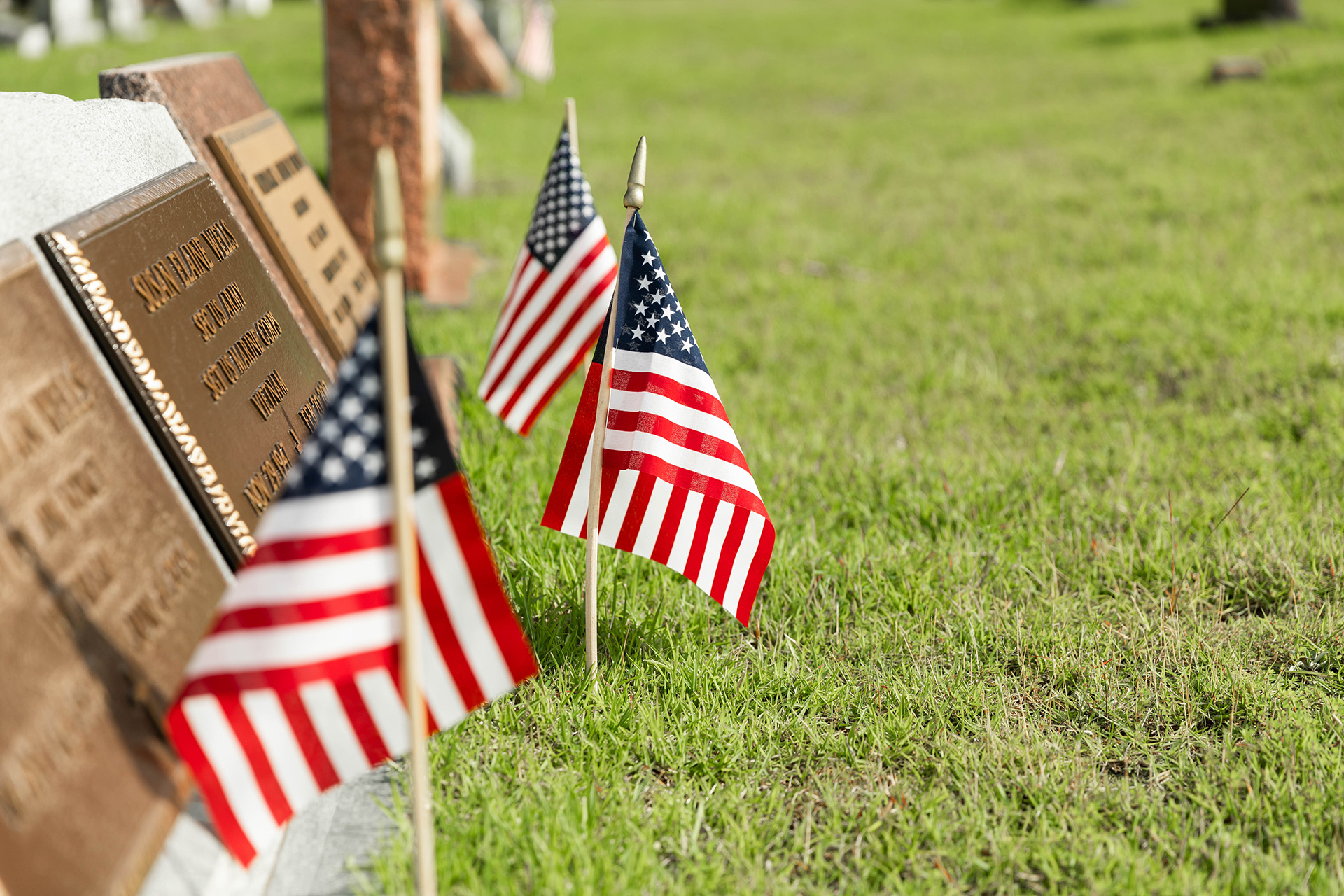
Robbie and I are standing just off the circle driveway when a pickup truck drives up and stops.
“I was just driving by, and I saw y’all standing by my Gramma’s grave. Couldn’t tell who you were,” the driver says. Robbie and I introduce ourselves. “Those graves right there are my parents, grandparents, great-grandparents, and great-great-grandparents. Four generations of my people.” He points to the row where Robbie and I stand. We show him where our own families are buried.
“Shore looks good out here. They do a fine job of keeping the place up. We all appreciate it.” He puts the truck in gear. “OK. Y’all have a good’n.” He waves as he pulls through the never-closed gates and back out onto Arch Street Pike, headed for lunch at the café.
“Shore looks good out here. They do a fine job of keeping the place up. We all appreciate it.” He puts the truck in gear. “OK. Y’all have a good’n.”
I repeat to myself: No one visiting Salem is a stranger.
The Legend of Poor Old Uncle Bob
Robbie’s father was my Uncle Bob — Robert Haynes, a.k.a. Poor Old Uncle Bob, as he was known throughout the county (no one is really sure where the nickname originated). Always ready with a joke and a homespun story, POUB was loved by all in spite of his raffish persona and sometimes inappropriate humor. We called him POUB in our text messages during his final months (“Going 2 rest home 2 c POUB today. Meet me there?” “Will they let POUB have cupcakes?”).
Uncle Bob took care of Salem for, well, as long as I can remember. When it came to the history of the East End community in general and the Salem Cemetery in particular, no one knew more than my Poor Old Uncle Bob. Not only did he know everyone (and all their secrets, which he was happy to share), but he also gave everyone nicknames. I was Johnny Cake. My mother was Droopy Drawers (I never cared to know where her nickname originated). At Uncle Bob’s funeral, the pastor asked everyone in the packed church house to stand if POUB had blessed them with a nickname. Only a handful remained seated.
Uncle Bob cared for Salem Cemetery as though it were his personal property. He knew her seasons and her needs. POUB made sure her grass was mowed, that her fence line was free of weeds and brush, that the pavilion was clean and ready for the next set of mourners.
I don’t know about other rural cemeteries, but I suspect each has its own version of Poor Old Uncle Bob. If not, they need to find one.
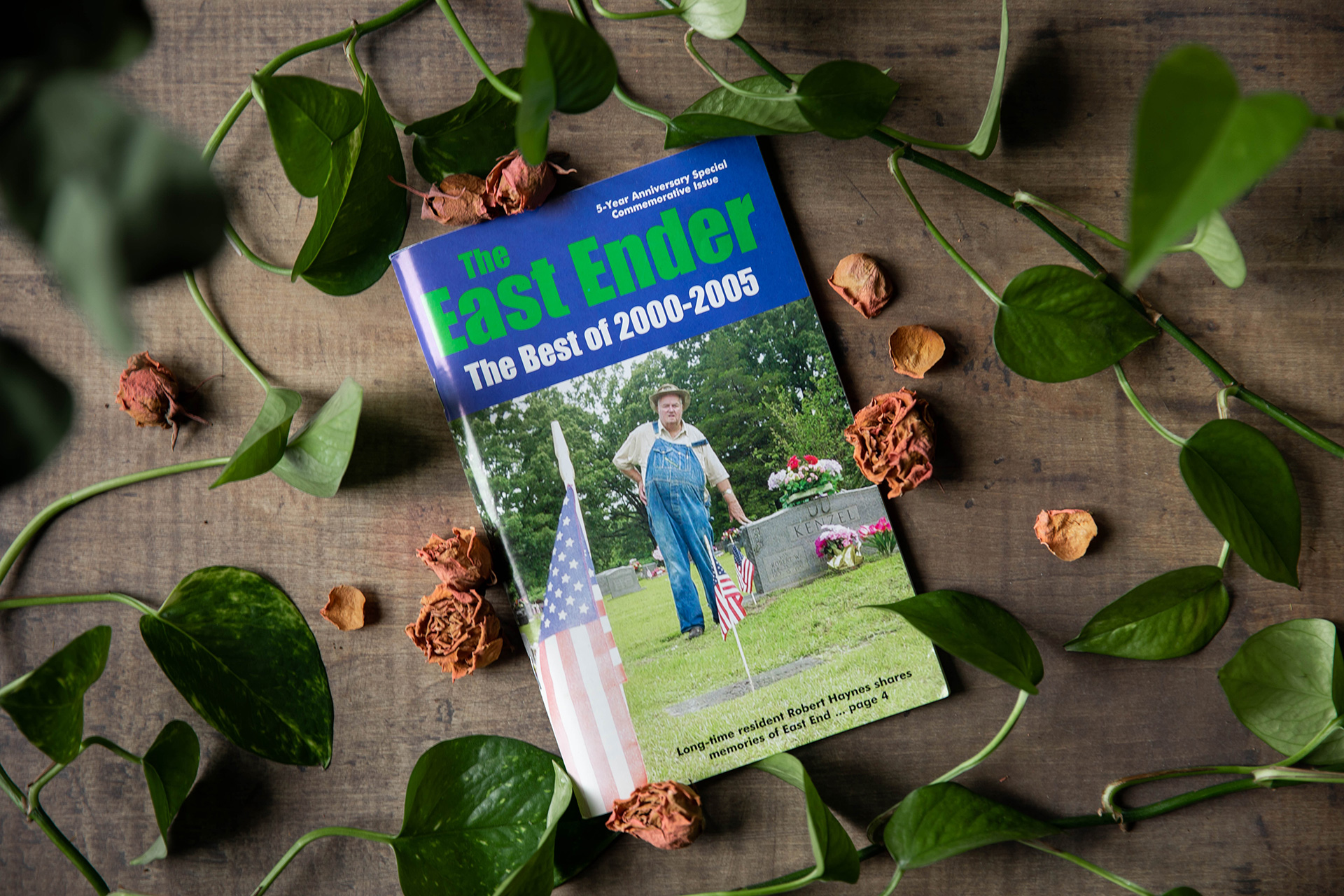
Passing the Baton
“After Daddy died, I was volun-told that I would take over duties at the cemetery.” Robbie has stepped into POUB’s impossible-to-fill shoes with cheerful grace. Even though he no longer spends days behind a push mower to keep the grass trimmed, Robbie is now the first call folks in the community make when they need to bury a loved one or complain about some real or imagined offense related to a grave or headstone.
“What happened to my grandma’s ashes?” one frantic caller demands.
“Dunno. Who’s your grandma and where were her ashes?” Robbie at his diplomatic best.
“I left them on my grandpa’s grave in a coffee can. And now they’re gone. What are you going to do about it?” Indignant and looking for a fight.
With all the people skills inherited from Uncle Bob, Robbie replies dryly, “Well ma’am, I gotta say, first of all, that whenever I have some item that means a lot to me, one that is really really important like your grandma’s ashes, I toss that sucker into an old coffee can, leave it out in the middle of a cemetery, and just drive on away.”
"No ma’am. I just want you to realize why your grandma’s ashes disappeared. My guess is that some well-meaning visitor thought that can was just trash and took it down to the dumpster. Just sayin’.”
“Now, Robbie, I believe you are gettin’ sarcastic with me.”
"No ma’am. I just want you to realize why your grandma’s ashes disappeared. My guess is that some well-meaning visitor thought that can was just trash and took it down to the dumpster. Just sayin’.”
Cousin Robbie, like my Poor Old Uncle Bob, doesn’t mince words or hold back his opinions.
Apparently, those types of encounters were the norm during POUB’s reign as King of Salem Cemetery and now those duties fall to Robbie. And he handles them with the same tact and finesse we all came to expect from our beloved and always-inappropriate uncle.
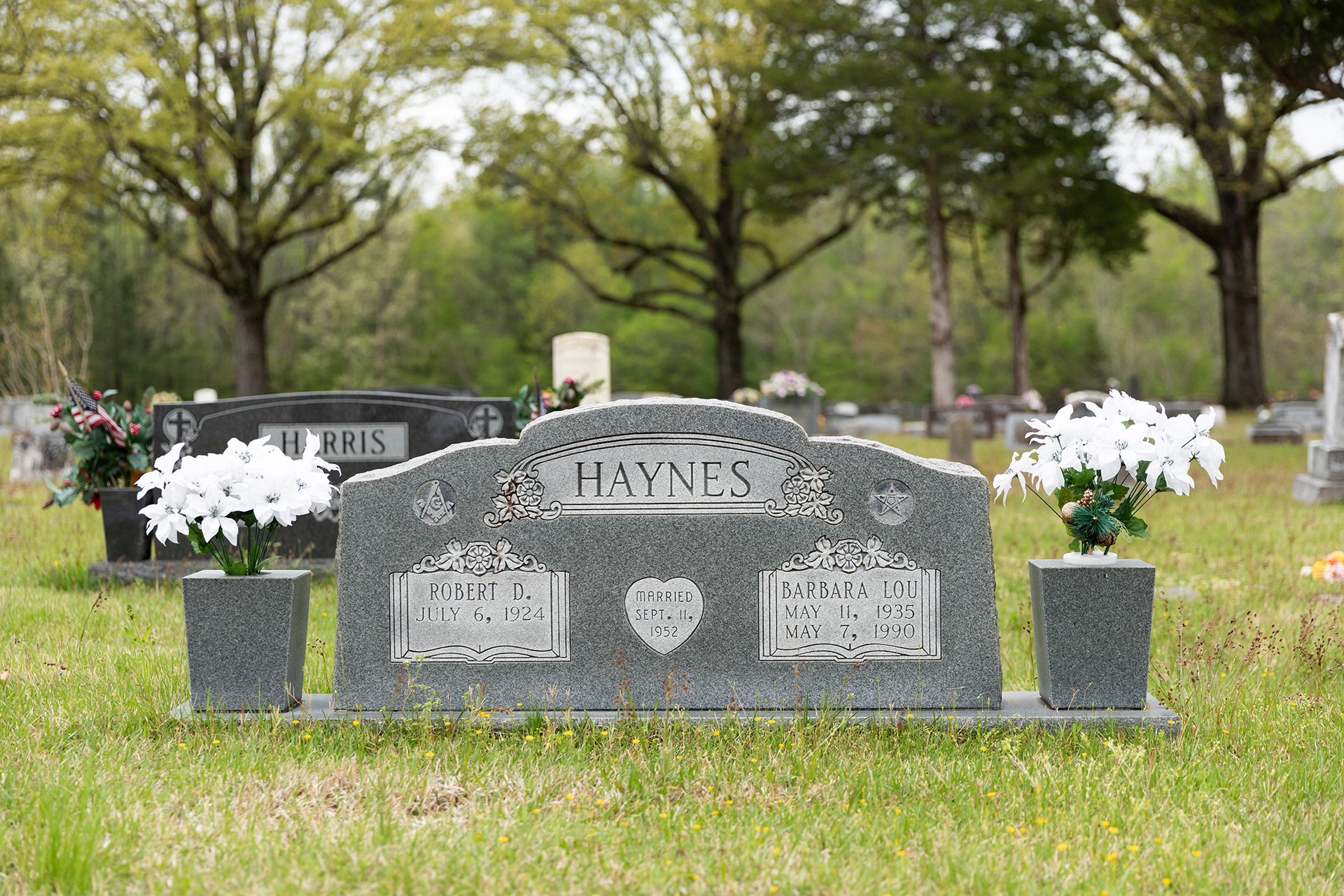
Stories From the Headstones
Customer complaints aside, everyone in East End loved and respected Uncle Bob and is grateful to Robbie for continuing to care for Salem. The residents all have ties to the cemetery and love her faithful presence in the community. To be buried there, one must have family already in a plot or must live for the past five years within a four-mile radius.
As I stroll through row after row of headstones and markers, I find myself becoming acquainted with Salem’s residents, even those I’m not related to. I know, for example, that Hunter played the guitar and Steve loved to cook out on his grill. Hippy and his son Brandon rode motorcycles together. Melanie and Michael like to laze about in their hammock and play with their dog. Randy loved his racecars.
I know these facts about the deceased from studying the symbols carved or lasered on their headstones. In rural Arkansas cemeteries, one doesn’t find famous names — no politicians or movie stars, no lofty coats of arms, no Victorian or Gothic Revival mausoleums for the rich and powerful.
Unlike those more sophisticated cemeteries, like Mount Auburn and Mount Holly, Salem and her sister cemeteries are humble places for humble people. People dedicated to their faith and marriages and families. No trappings of pretentious icons or shrines to high society, no patrons of the arts, no matrons of the Junior League. Just real people who led real lives and left real legacies.
The symbolism on the headstones at Salem tells stories of people who put faith and family first. Carved in the stones are praying hands, open Bibles, intertwined wedding rings (a favorite), crosses, and dogwood blossoms. Carved in the stones are beloved Bible verses, country music lyrics, and poetry. The stones display nicknames of loved ones: Hippy, Mouse, Monkeyman, Hehaw, Peck. The stones display symbols that meant something to the deceased and their loved ones: a deer on the hunter’s gravestone; a fish on the angler’s; a pool cue and 8-ball on the party animal’s. A Freemason’s square and compass; an Eastern Star.
Angels, baby shoes, and lambs adorn the tiny headstones of the children. I feel the tears well up in my eyes.
Some are tilted and some are broken, but all are valued and cared for. All bear the responsibility of reminding their visitors that a soul passed through that spot — a soul worth remembering.
My Uncle Eulous was a blacksmith. His stone sports a hammer and anvil. On the back is carved a poem by John Clifford called “The Anvil,” a beautiful metaphor for faith and the durability of God’s word. Uncle Eulous also played the banjo, or, as he called it, the banjer. If he had been my father, I’d be getting a banjer carved right beside that hammer and anvil.
Many graves at Salem have only rocks or cinder blocks serving as markers. Some have hand-carved names. Stan. John’s. Infant Hopf. G. Some are marked with paint. Some are made of wood. Some are blackened by time or covered with lichen. Some are tilted and some are broken, but all are valued and cared for. All bear the responsibility of reminding their visitors that a soul passed through that spot — a soul worth remembering with stone or marble or granite or wood, regardless of how humble the marker or how simple the life.
Serving the community is a sacred function of all rural cemeteries, and Salem fulfills her duties well. We expect a lot from our cemeteries: a place to bury our loved ones; a place to go for meditation, to escape from hectic lives and disturbing headlines. A place to connect with the past, with our ancestors, with their legacies. We expect a place to sit and remember, to offer thanks and to heal from our grief.
My expectations are well met as I walk through the simple archway entrance to Salem and leave the chaotic world behind. She provides a sacred place set aside by the community for reminiscing and celebrating her founders, her families, her legends, and her heritage.
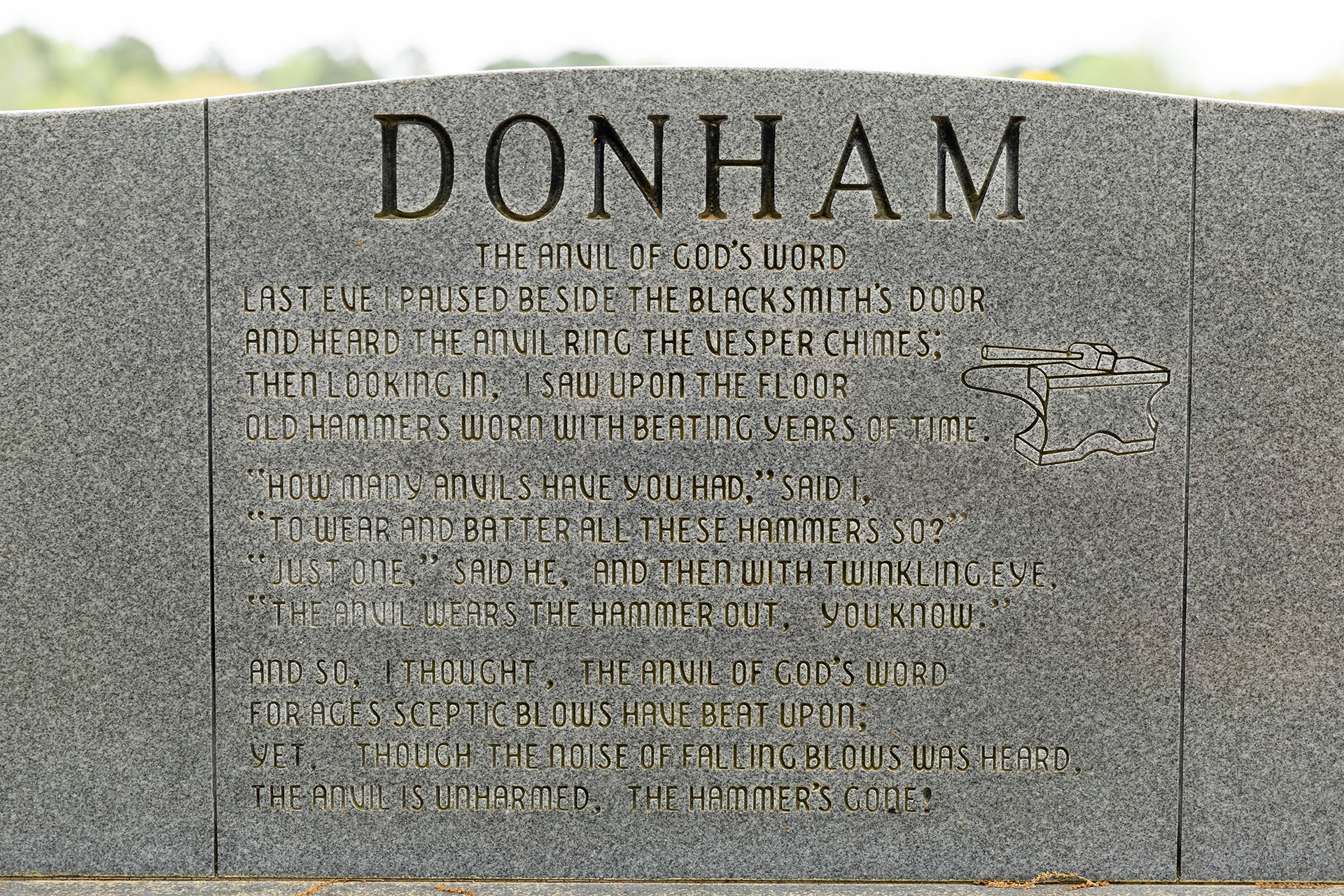
The Meaning of Community
The East End Café sits across the street and a smidge south of the cemetery. As in many communities, the café is a social hub for anyone wanting a warm cup of coffee with their grits and sausage or a tall frosty glass of sweet tea on a sweltering summer afternoon. After a graveside ceremony, the newly grieving family might adjourn to a local church fellowship hall for a meal and to enjoy each other’s company and remember the loved one they just buried. Or, just as likely, to the beloved café.
East End is a community that can still rally enough volunteers to feed a horde of bereaved relatives with enough left over to fill many a Tupperware bowl. They can still organize quickly after a flood or a house fire or a tornado to ensure the affected families are fed, clothed, and have a safe place to sleep.
East Enders promptly attend to damages to the headstones or the occasional flooding at Salem. A few years back, vandals turned over some of the older stones and broke more than a few. The local Mason’s Lodge rallied their members to repair what they could and clean up the rest. Some of the broken ones must now lay flat, but they still mark the resting places of those early inhabitants from the late 1800s.
East End is a community that can still rally enough volunteers to feed a horde of bereaved relatives with enough left over to fill many a Tupperware bowl.
East Enders take care of their people — both their living and their dead.
Slowing Down
As we go about our busy lives, driving here to there, we all must occasionally pass a rural cemetery or a church-affiliated graveyard. Mostly we don’t notice them as we buzz by, radio blaring or minds occupied with the day-to-day minutia of living. Many times, I have passed by the Salem Cemetery on my way to or from some superficially important errand without taking note — of her beauty, of her importance.
But now that I’ve spent quality time with the old girl, now that I’ve listened to her whispered voice telling me to slow down, to feel her golden warmth filtering through the leaves of the ancient oaks, I think I may stop more often. Stop to admire the lilac wisteria growing beside the north gate. Stop to quietly say hello to folks I don’t yet know. Stop to pay respects to the brave soldiers, the childhood friends, the thoughtful neighbors.
Stop to pay respects to my people. To the Haynes and the Wrights. To Uncle Eulous. To Uncle Bob and his beautiful bride, my Aunt Barbara. To the little Cole boys at the base of their cedar tree.
These are the people who made me who I am and to whom I owe at least a quiet moment of my time.

